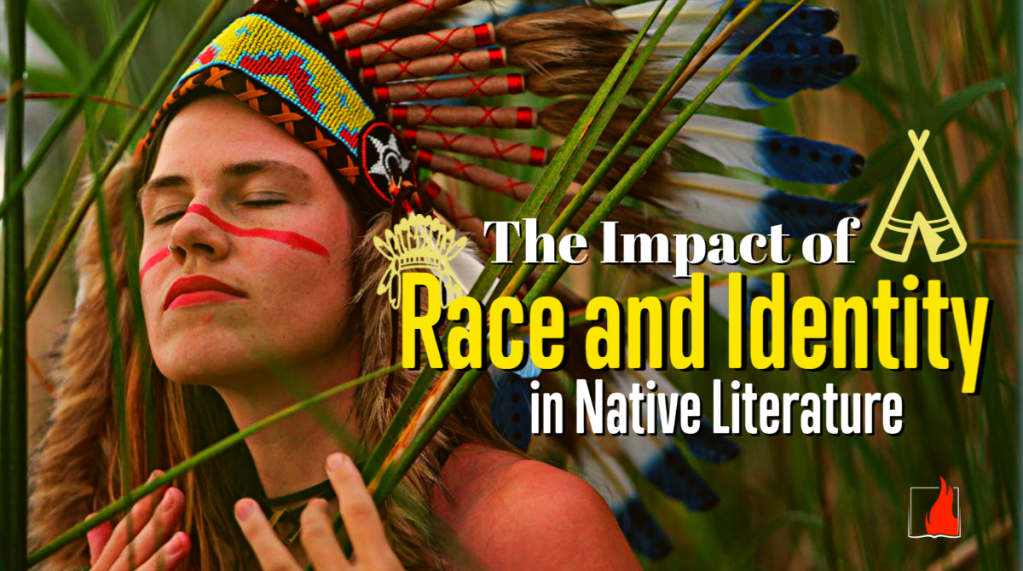The Impact of Race and Identity on Native Americans is represented in Leslie Silko’s novel, “Ceremony.” The impact of the ideology on the thinking of Leslie Silko’s character, Tayo, produces much inner anxiety for the native character due to having to juggle multiple ideological agendas, constantly barraging Tayo at a feeble point in his life. The fact that “ideology is the thing that entices you to forget that meaning always happens in a context” and that “ideology is the making natural of a cultural phenomenon” causes so much distress in Tayo’s thinking.
Tayo is constantly questioning his surroundings and beliefs due to there being multiple cultural expectations of him that stem from his ancient native past; his white man’s education, and his military experiences up until the end when Tayo finally decides which path to pave.
One way to look at it …
One way to look at Tayo’s thought process would be to think about each ideology as a layer of clothing, such as a shirt. He begins his journey with many shirts on at the same time and his thoughts are constantly weaving in and out of cultural context until the end of his journey when he finally finds just the right shirt, size and all, which provides him with the correct ideologies that make him happy and able to heal old wounds.
Dealing with the Impact of Race and Identity
As stated, he begins his journey with three cultural ideologies which can be broken down into his military past; his experiences in the white man’s world, and what he thinks he should be – and then we have the cultural ideology with which he grew up in, which is that of Native American ancestry.

Throughout this novel, we see the impact of race and identity with Tayo trying to conform to a “pet ideological agenda.” The idea of ideology is itself paradoxical so this also adds to the confusion in Tayo’s mind. All his thoughts contradict themselves along with the way that he was brought up so this is another layer that author, Leslie Silko adapted to her character.
Silko plays on the Man versus Self-contradicting paradox – Tayo is battling his own different selves and questioning each one’s argument and one example of this conflict would be when Tayo questions Rocky about drinking the freshly hunted deer’s blood right after they have killed him. Tayo then remembers what he and his best friend, Rocky, learned in school about bacteria and refrigeration and then questions his Native American heritage on their practices in contrast to the white man’s beliefs.
If you are enjoying this article, perhaps you would like the 15 Best Quotes from “Fahrenheit 451”
So this would lead the reader to understand that Tayo’s first ideological foundation or ‘shirt’ is his Native American ancestry. He grew up on a reservation and it is actually an old scalp ceremony that begins Tayo’s quest for his ‘self’ once he has returned from the war as a sick Veteran.
He had been in the hospital for quite some time in California but upon his return to the reservation is when he tried the scalp ceremony even though the white military doctors had advised against it. The reader then witnesses the debate between two ideologies on the question of healing and medicine.
Cultural Ideology
A second cultural ideology that was weighing on Tayo’s thinking was his white education which contradicted his ancestry. He had grown up believing that the world was all one and that that was the way the world “should be”, but then the new world had become “entangled with European names” and that “Christianity separated the people from themselves… because Jesus Christ would save only the individual soul. Now Tayo has to deal with religious ideologies that negate each other.
In his adolescence, Tayo grew up with a firm belief in his past even though his best friend Rocky was a believer in the white man’s ways even though it was “Indian witchery that made white people in the first place.” He has been led to believe that he is living in a white man’s world, yet it is the Indian who created the white man. it’s no wonder he is confused.
The Layers Begin To Come Off
He is taking bits and pieces of his military lifestyle or his “third shirt” and mixing them with the civilian world, which again comes from the impact of race and identity. in the military, Tayo was a well-trained infantry Marine with objectives and surroundings very distinct from his lifestyle back home in New Mexico. Tayo had trouble code-switching between the two cultures due to one experience leaving him with a scarred painful memory of watching his brother die in war.
For example, when he first got home, he would just lay in bed all day thinking about Rocky while throwing up. The room he slept in reminded him of what used to be and not what he had become; he remembers growing up with Rocky in that same room, but just Rocky isn’t there anymore. In his mind, Tayo has flashbacks of watching Rocky die but this is out of context with what is actually around him.

Last Thoughts
After analyzing each ideology and making the comparison to layers of clothing (shirts), one can understand that Tayo has the option of wearing whichever shirt best fits him. Tayo struggled not only to reduce the number of shirts he wore but also to figure out which shirt to wear. He begins his journey with multiple shirts and never really knows which one to wear. Still, in the end, he has finally chosen a shirt or cultural ideology – his Native American ancestry.
In the end, Tayo is freed from the impact of race and identity and battling his belief system by what we would automatically assume is “his escaping the past” but according to The Theory Toolbox, the task is “not to escape cultural ideology but to account for it’s working in the seemingly disinterested and neutral presentations of culture.” So in other words, Tayo learns to “accept each day as a natural fact: Things are the way they are; case closed.” Yet the paradox remains – has Tayo finally chosen a shirt that he feels comfortable in, or has he chosen not to wear any shirt and just let it be?






Leave a Reply